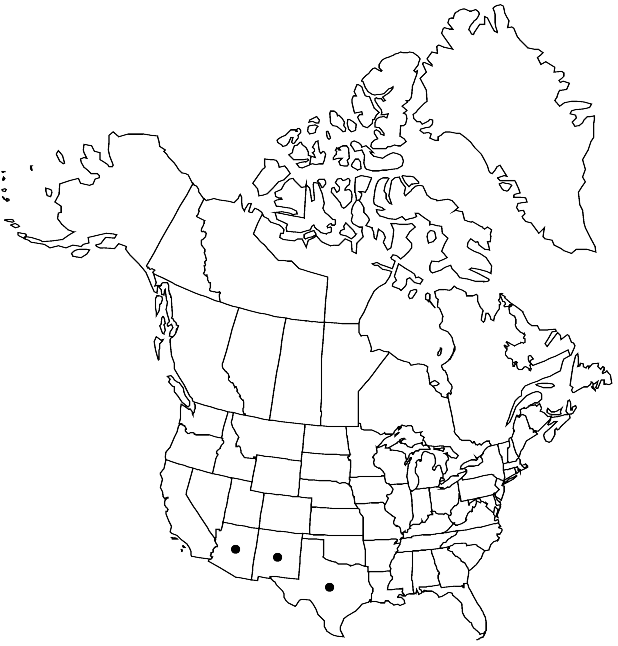Difference between revisions of "Cleomella longipes"
Hooker’s J. Bot. Kew Gard. Misc. 2: 255. 1850.
FNA>Volume Importer |
FNA>Volume Importer |
||
| Line 31: | Line 31: | ||
-->{{#Taxon: | -->{{#Taxon: | ||
name=Cleomella longipes | name=Cleomella longipes | ||
| − | |||
|authority=Torrey | |authority=Torrey | ||
|rank=species | |rank=species | ||
| Line 46: | Line 45: | ||
|publication year=1850 | |publication year=1850 | ||
|special status= | |special status= | ||
| − | |source xml=https://jpend@bitbucket.org/aafc-mbb/fna-data-curation.git/src/ | + | |source xml=https://jpend@bitbucket.org/aafc-mbb/fna-data-curation.git/src/f50eec43f223ca0e34566be0b046453a0960e173/coarse_grained_fna_xml/V7/V7_288.xml |
|genus=Cleomella | |genus=Cleomella | ||
|species=Cleomella longipes | |species=Cleomella longipes | ||
Revision as of 23:15, 16 December 2019
Plants (rarely perennial) 30–80 cm. Stems sparsely branched (central stem dominant); glabrous. Leaves: stipules linear, 0.5–1 mm (scarious); petiole 0.8–2 cm; leaflet blade oblanceolate to oblong-lanceolate, 1.5–3 × 0.4–1 cm, thin, margins entire, apex acute to rounded or slightly emarginate, surfaces glabrous. Inflorescences racemes, terminating stems and branches, 2–12 cm (10–50 cm in fruit); bracts unifoliate, 5–12 mm (distalmost flowers often absent). Pedicels ascending in fruit, 4–6 mm (5–8 mm in fruit). Flowers: sepals green, lanceolate, 0.9–2.2 × 0.5–0.7 mm, glabrous; petals yellow, oblong, 6–9 × 2–4 mm, glabrous; stamens yellow, 8–12 mm; anthers 1.5–1.9 mm; gynophore ascending, 6–17 mm in fruit; ovary rhomboidal, 1–1.5 mm; style 1–2 mm. Capsules rhomboidal, 4–8 × 6–10 mm, glabrous. Seeds 6–16, dark brown, globose, 2–2.2 mm, smooth. 2n = 34.
Phenology: Flowering late spring–late summer.
Habitat: Saline or alkaline flats
Elevation: 500-1000 m
Distribution

Ariz., N.Mex., Tex., Mexico.
Discussion
Selected References
None.